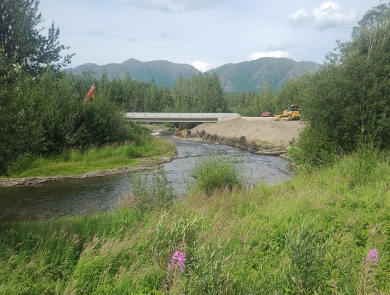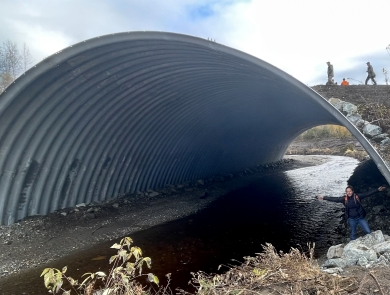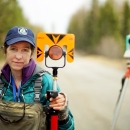Our Services
We provide financial and technical assistance to support projects that improve fish passage - the ability of fish and other aquatic wildlife to move freely throughout their life .
Across the country, millions of aging, obsolete, or poorly designed dams, roads, and levees are causing widespread ecological damage and putting communities at risk. These barriers trap fish, preventing them from finding food, shelter, and habitat to spawn. Outdated and aging infrastructure affects people as well as wildlife: it degrades water quality, can heighten flood risk, and creates dangers for recreational users. Fortunately, restoring aquatic connectivity offers a win-win solution for both people and nature.
Since 1999, the National Fish Passage Program has:
- Worked with more than 2,000 local communities, Tribes, and private landowners across the country
- Removed or bypassed more than 3,500 barriers to fish passage fish passage
Fish passage is the ability of fish or other aquatic species to move freely throughout their life to find food, reproduce, and complete their natural migration cycles. Millions of barriers to fish passage across the country are fragmenting habitat and leading to species declines. The U.S. Fish and Wildlife Service's National Fish Passage Program is working to reconnect watersheds to benefit both wildlife and people.
Learn more about fish passage - Reopened access to more than 64,000 miles of upstream habitat for fish and other wildlife
2023 By the Numbers
- 118 barriers removed or bypassed
- 2,200 miles of stream habitat reopened
- 24,812 acres restored for fish and other wildlife
Our Library
Explore our library of fish passage fish passage
Fish passage is the ability of fish or other aquatic species to move freely throughout their life to find food, reproduce, and complete their natural migration cycles. Millions of barriers to fish passage across the country are fragmenting habitat and leading to species declines. The U.S. Fish and Wildlife Service's National Fish Passage Program is working to reconnect watersheds to benefit both wildlife and people.
Learn more about fish passage resources, stories, and projects.








